March is celebrated as National Nutrition Month, a period dedicated to emphasizing the importance of healthy eating and making nutritious food choices. For those caring for elderly family members, providing meals that are both nutritionally balanced and tailored to meet the unique dietary requirements of seniors is of utmost importance. As we observe this significant month, let's explore healthy habits and senior-friendly recipes designed to not only provide essential nourishment but also to please the palates of our older loved ones.
Embracing Healthy Habits Seniors and Caregivers
Maintaining a healthy lifestyle becomes increasingly important as we age. For seniors and their caregivers, adopting healthy habits can significantly enhance quality of life and overall well-being. Here are some practical tips to help seniors start on the path to healthier living:
Plan meals
Taking time each week to plan meals that cover all five food groups is essential. This not only ensures your loved one enjoys a nutritionally balanced diet but also makes grocery shopping more straightforward, as your meal plan doubles as an effective shopping list.
Make informed choices
While shopping for groceries, pay close attention to the Nutrition Facts labels on food packaging. This step is key in choosing products that are higher in vitamins, minerals, and dietary fiber but lower in sodium, saturated fat, and added sugars, meeting the specific nutritional needs of seniors.
Understand calorie labeling
When dining out or ordering food, look for calorie information on menus. This can help you make healthier choices for your senior, enabling you to manage their calorie intake effectively, which is critical for maintaining their overall health.
Monitor Intake and Portions
Monitoring how much and what your senior eats is vital in maintaining their health. Use the Nutrition Facts label as a guide to control portion sizes and calorie intake, ensuring they receive the nutrients they need without unnecessary excesses.
Recipe Ideas for Balanced Meals
Breakfast: a nutritious start to the day
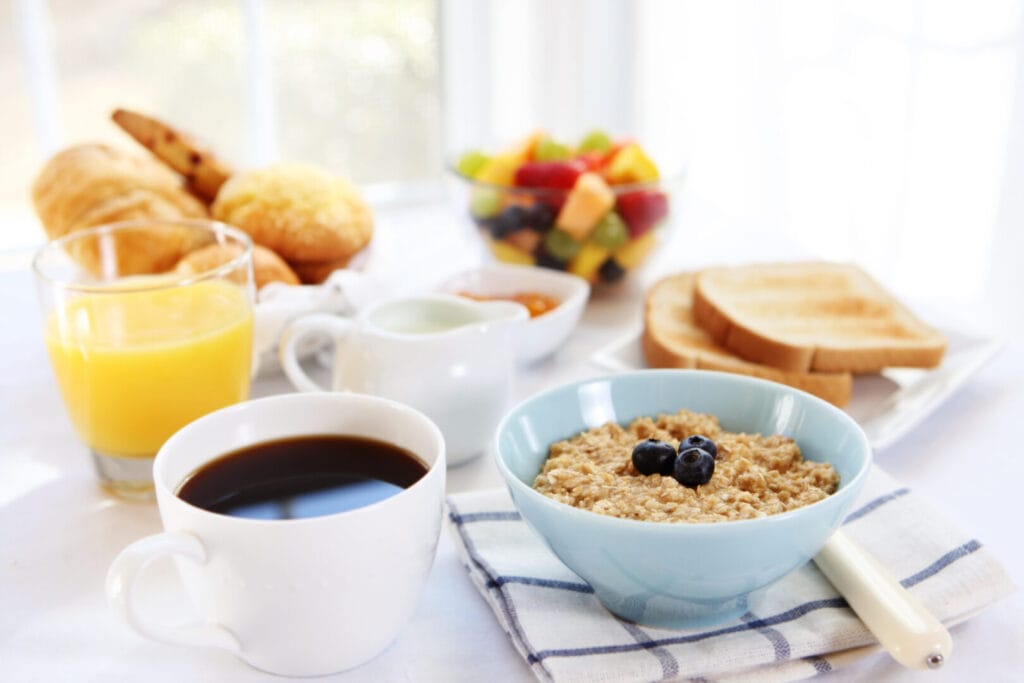
Breakfast is often called the most important meal of the day, and for a good reason. It sets the tone for energy levels and nutritional intake. For seniors, starting the day with a meal that's both nutritious and easy to eat can help maintain energy levels, support cognitive function, and promote heart health. Our breakfast ideas focus on combining simple, wholesome ingredients like whole grains, lean proteins, and healthy fats to create meals that are both satisfying and senior-friendly.
1. Creamy avocado and egg toast
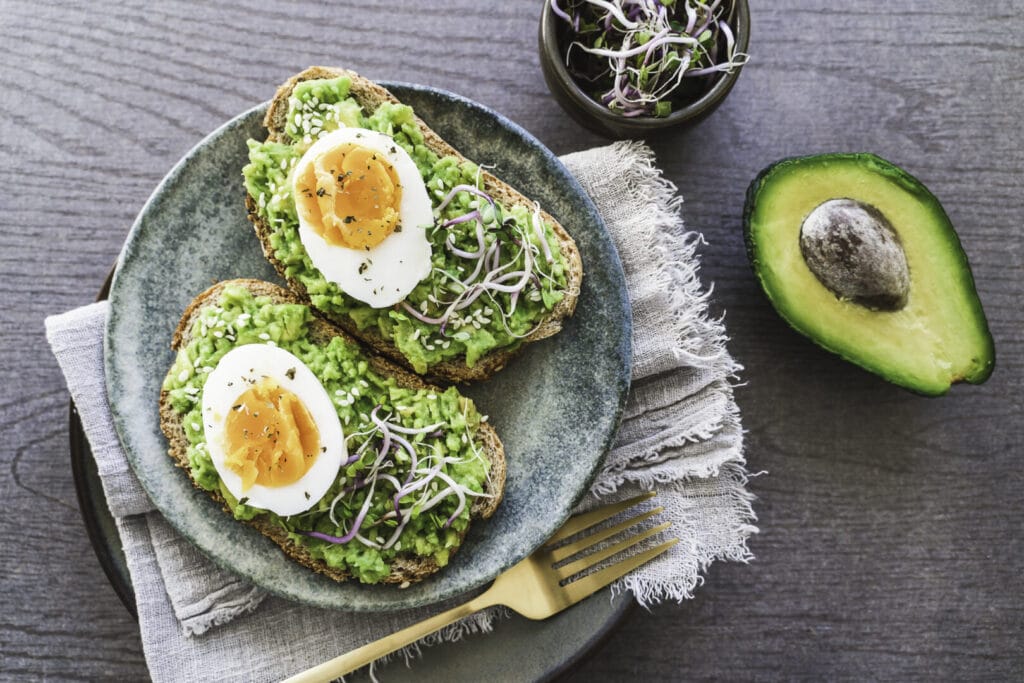
- Ingredients: Soft whole-grain bread, ripe avocado, poached or scrambled eggs, sprinkle of paprika.
- Benefits: Avocado offers a creamy texture loaded with healthy fats and fiber, ideal for senior digestion and heart health. Eggs contribute high-quality protein and choline, enhancing brain function. This combination on soft whole-grain bread provides a balanced, nutrient-rich start to the day that's also easy on the palate.
- Instructions: Begin by toasting the soft whole-grain bread to your desired level of crispness. Mash the ripe avocado in a bowl and spread it evenly on the toast. Prepare the eggs to your liking—either poached or scrambled—and place them on top of the mashed avocado. Sprinkle a bit of paprika over the eggs for added flavor. This dish combines textures and nutrients beneficial for seniors, making breakfast both enjoyable and health-supportive.
2. Berry and yogurt smoothie
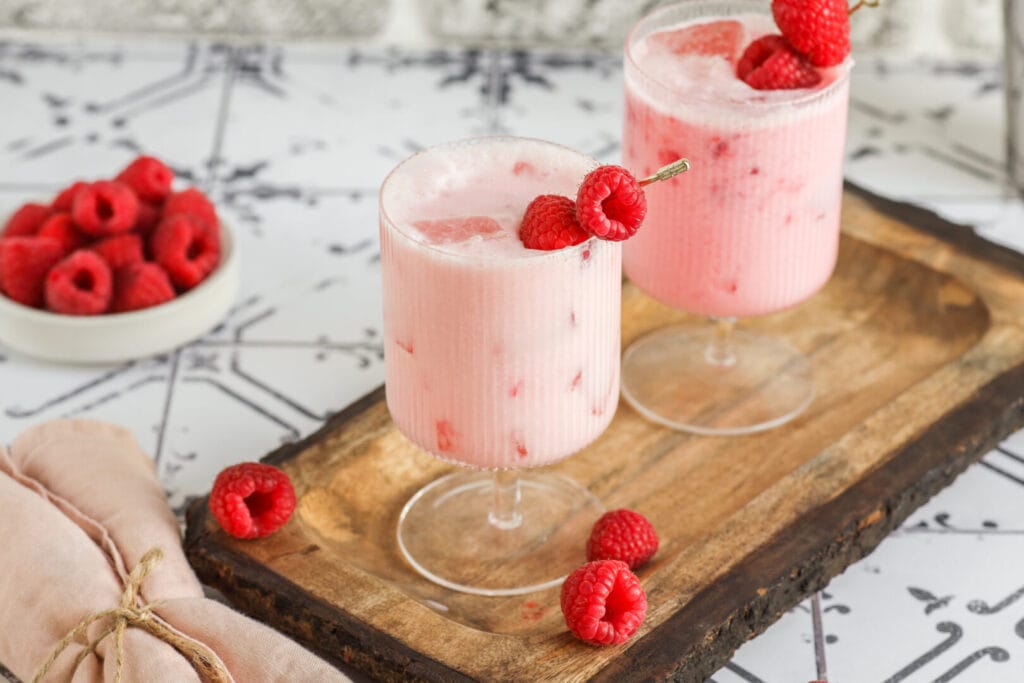
- Ingredients: Mixed berries (fresh or frozen), plain Greek yogurt, a splash of almond milk, and a teaspoon of honey for sweetness.
- Benefits: Berries are packed with antioxidants and vitamins, supporting immune health and providing natural sweetness. Greek yogurt is a fantastic source of protein and probiotics, aiding in digestion and bone health. The almond milk adds a smooth consistency and a dose of vitamin E, while honey brings natural sweetness and energy.
- Instructions: Combine the mixed berries, Greek yogurt, almond milk, and honey in a blender. Blend until smooth. If the smoothie is too thick, add a little more almond milk to reach your desired consistency. This smoothie is not only nutritious but also easy to consume, making it a perfect breakfast option for seniors who may have difficulty with solid food early in the morning.
3. Oatmeal with bananas and cinnamon
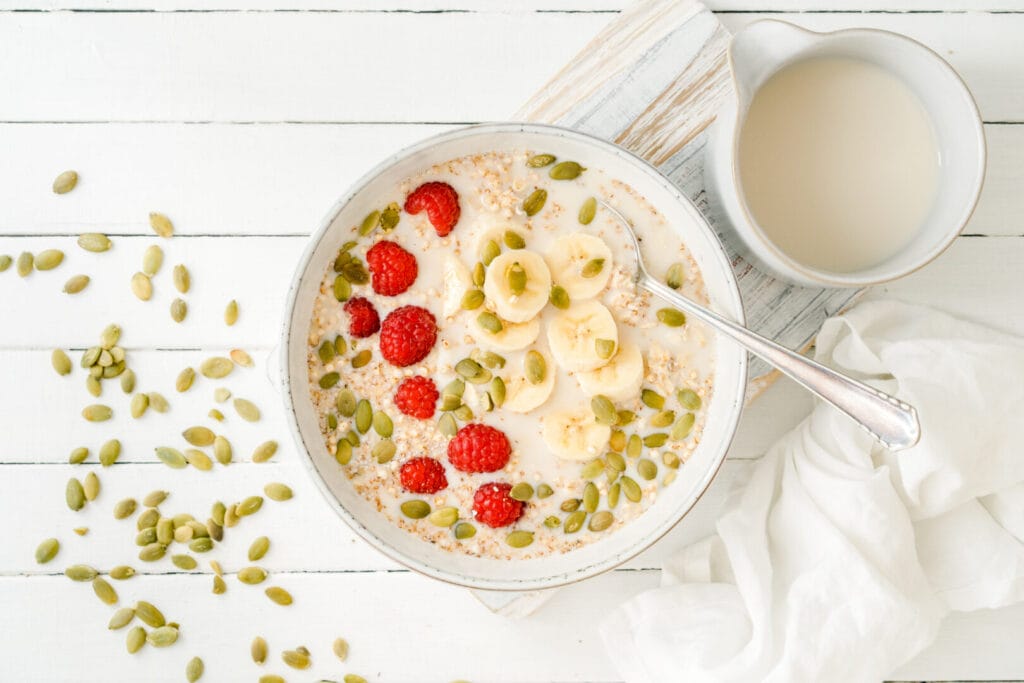
- Ingredients: Rolled oats, sliced bananas, cinnamon, and milk (or a milk alternative).
- Benefits: Oatmeal is a heart-healthy grain that provides a good source of fiber, aiding in digestion and keeping cholesterol levels in check. Bananas add natural sweetness and potassium, which is vital for maintaining healthy blood pressure levels. Cinnamon not only adds flavor but also has anti-inflammatory properties.
- Instructions: Cook the rolled oats in milk or a milk alternative according to package instructions until they are soft and creamy. Slice a banana and stir it into the cooked oatmeal. Sprinkle cinnamon on top for flavor. This warm and comforting meal is easy to prepare, gentle on the stomach, and packed with nutrients, making it an ideal breakfast for seniors.
Lunch: light and nourishing midday meals
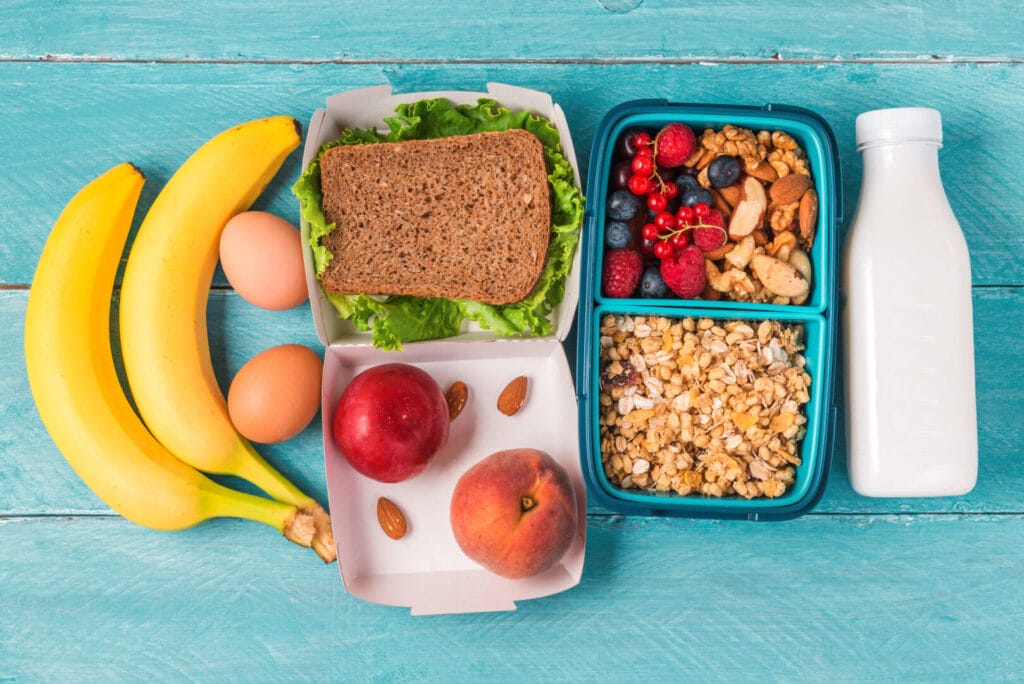
Lunch offers an excellent opportunity to incorporate a variety of nutrients into a senior's diet, helping to sustain energy throughout the afternoon. Our lunch recipes are designed to be both light and nourishing, providing a balance of proteins, carbohydrates, and fats, along with essential vitamins and minerals. These meals are not only easy to prepare but also gentle on the digestive system, making them perfect for a midday boost.
1. Smooth sweet potato soup
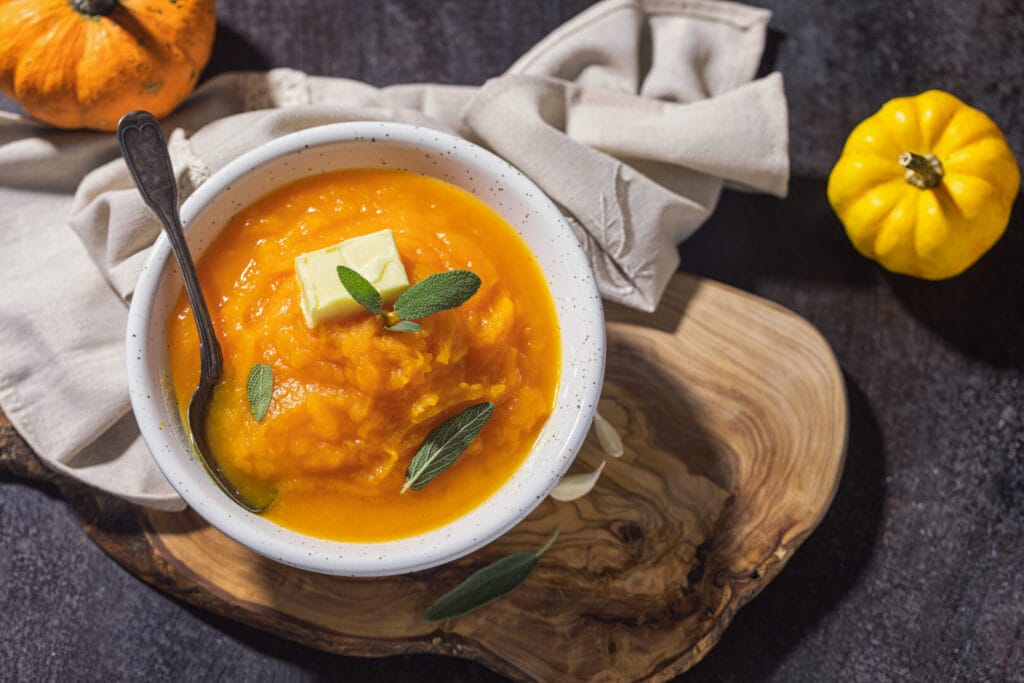
- Ingredients: Roasted sweet potatoes blended into a smooth soup, low-sodium vegetable broth, a touch of cream for richness, and mild spices according to taste.
- Benefits: Sweet potatoes are a great source of beta-carotene, vitamins, and fiber. This soup is warming, easy to digest, and can be made creamy to suit different dietary needs.
- Instructions: Begin by roasting sweet potatoes in the oven until they are soft and tender. Once cooled, blend the sweet potatoes with low-sodium vegetable broth in a blender until smooth. Transfer the mixture to a pot, and heat over medium. Stir in a touch of cream for richness and add mild spices such as cinnamon, nutmeg, or ginger according to your taste preferences. Continue to heat the soup, stirring occasionally, until it is warm throughout. Serve the soup with a dollop of cream or a sprinkle of herbs on top for garnish.
2. Chickpea salad sandwich
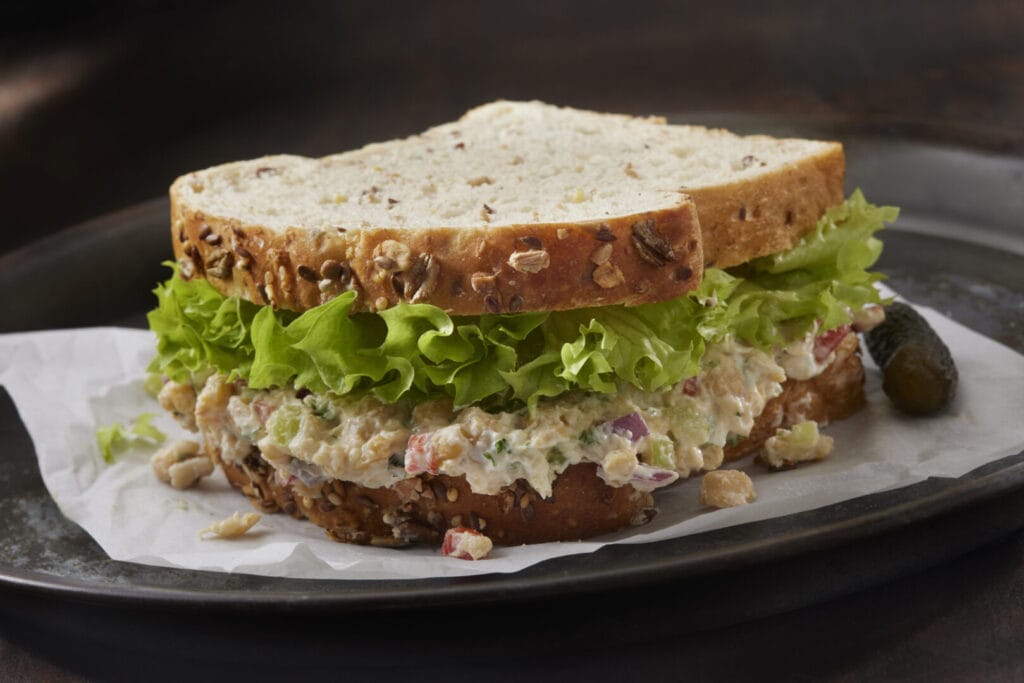
- Ingredients: Canned chickpeas, mayonnaise or a healthier alternative like avocado, Dijon mustard, celery, red onion, salt, pepper, and whole-grain bread.
- Benefits: Chickpeas are a fantastic source of protein and fiber, contributing to muscle maintenance and digestive health. The addition of celery and red onion provides a crunch as well as essential vitamins and minerals. Using whole-grain bread adds another layer of fiber and nutrients, making this a balanced, nutritious lunch option.
- Instructions: Drain and rinse the chickpeas before mashing them in a bowl. Mix in mayonnaise (or mashed avocado for a healthier fat option), Dijon mustard, finely chopped celery, and red onion. Season with salt and pepper to taste. Spread the chickpea mixture onto slices of whole-grain bread and close to make a sandwich. This sandwich is not only nutritious but also soft and easy to chew, making it a senior-friendly lunch option.
3. Tuna and white bean salad
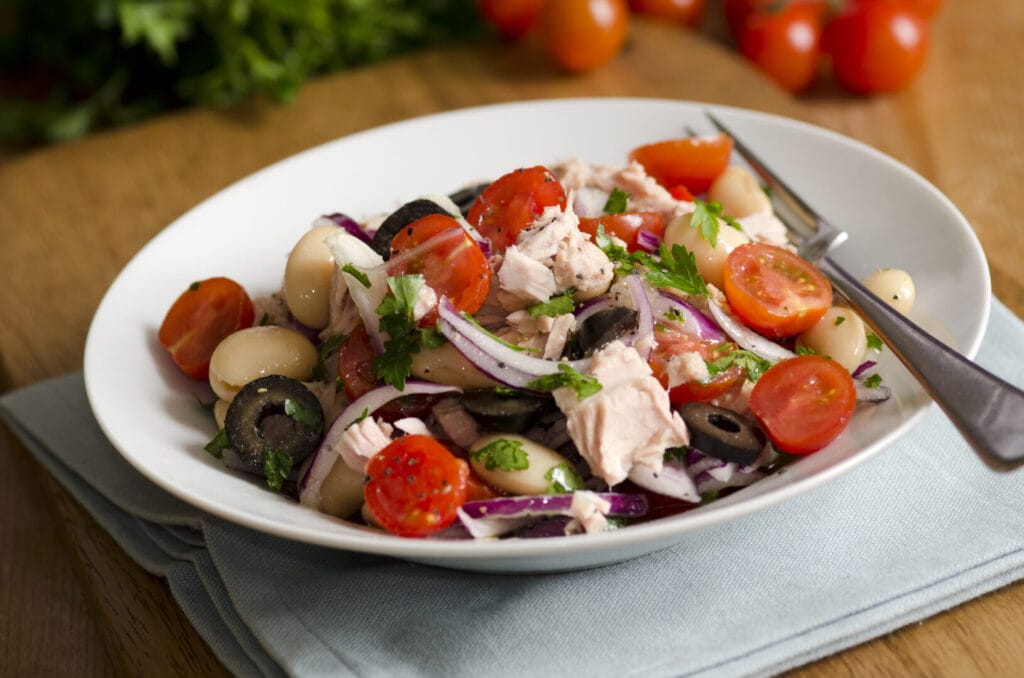
- Ingredients: Canned tuna (in water), canned white beans, olive oil, lemon juice, chopped parsley, salt, and pepper.
- Benefits: Tuna is a lean source of protein and provides omega-3 fatty acids, essential for heart and brain health. White beans are high in fiber and protein as well, supporting muscle health and digestion. Olive oil adds healthy fats, and lemon juice provides a boost of vitamin C.
- Instructions: Drain and flake the tuna into a bowl. Rinse and drain the white beans and add them to the tuna. Dress the mixture with olive oil and fresh lemon juice, then season with salt and pepper to taste. Fold in chopped parsley for a fresh flavor. Serve this salad on its own, over a bed of lettuce, or with whole-grain crackers for a crunchy texture. This salad is easy to prepare, nutritious, and provides a refreshing, light lunch option for seniors.
Dinner: comforting and wholesome evening fare
Dinner is a time for relaxation and enjoyment, a moment to savor flavors and unwind. For seniors, it's also an opportunity to ensure they're receiving all the necessary nutrients to support their health through the night. Our dinner ideas focus on easy-to-digest foods that are rich in nutrients necessary for muscle maintenance, bone health, and good sleep. These comforting and wholesome recipes are designed to be the perfect end to the day, providing both nutrition and pleasure in every bite.
1. Oven-baked chicken with soft vegetables
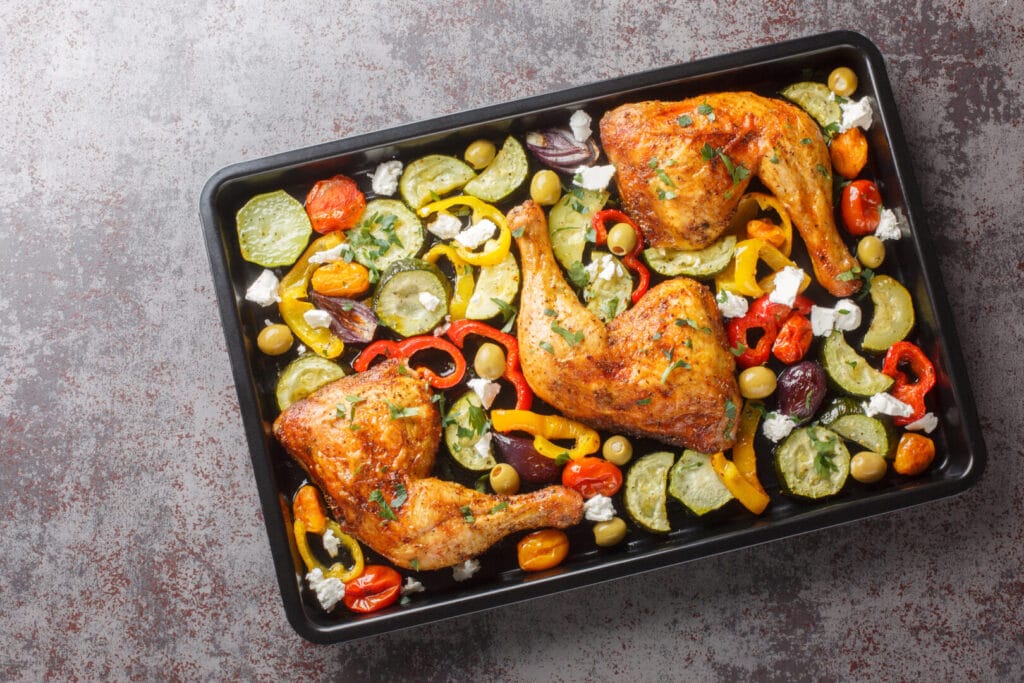
- Ingredients: Tender chicken breast, olive oil, and a variety of vegetables such as carrots, squash, and green beans, all baked to soft perfection.
- Benefits: Chicken provides lean protein, while the vegetables offer vitamins and minerals essential for senior health. Baking the ingredients together makes them softer and easier to chew.
- Instructions: To prepare Oven-Baked Chicken with Soft Vegetables, start by preheating your oven to 375°F (190°C). Toss tender chicken breasts and bite-sized pieces of your favorite vegetables—like carrots, squash, and green beans—with olive oil, salt, pepper, and optional herbs for flavor. Spread them in a single layer in a baking dish, ensuring vegetables are around the chicken for even cooking. Bake for about 25-30 minutes until the chicken is thoroughly cooked and the vegetables are tender. Let it rest for a few minutes before serving to ensure the chicken remains moist and flavorful.
2. Soft-cooked vegetable pasta

- Ingredients: Whole-grain pasta, olive oil, garlic, a variety of vegetables (e.g., spinach, tomatoes, zucchini), grated Parmesan cheese, salt, and pepper.
- Benefits: Whole-grain pasta provides a good source of fiber, which is important for digestive health. The vegetables add vitamins and minerals, supporting overall well-being, while olive oil and Parmesan cheese offer healthy fats and calcium, respectively.
- Instructions: Start by cooking the pasta according to the package instructions until it is soft. In a large pan, heat olive oil over medium heat and sauté garlic until fragrant. Add the chopped vegetables and cook until they are soft and tender. Mix the cooked vegetables with the drained pasta, and toss everything together with a bit of olive oil, salt, and pepper. Serve with a sprinkle of grated Parmesan cheese on top. This dish is not only nutritious but also easy to chew and swallow, making it a senior-friendly meal option.
3. Quiche with spinach and mushrooms
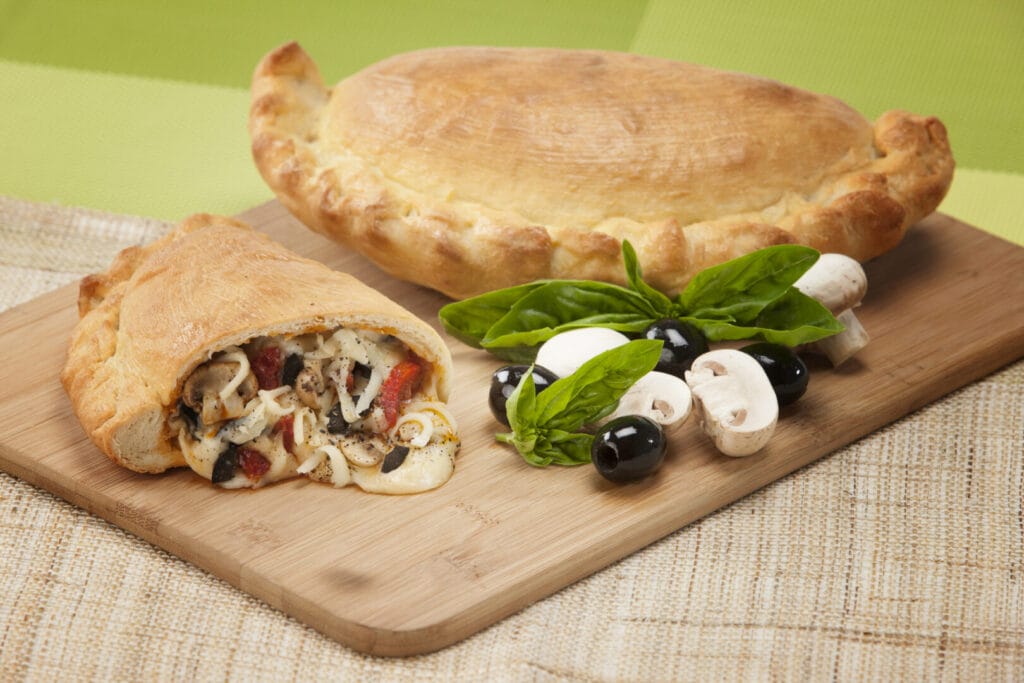
- Ingredients: Eggs, milk, grated cheese (such as cheddar or Gruyere), fresh spinach, mushrooms, a pre-made pie crust, salt, and pepper.
- Benefits: Eggs and milk provide high-quality protein and calcium, crucial for bone health. Spinach and mushrooms are excellent sources of vitamins and antioxidants, supporting immune health and providing dietary fiber for digestion.
- Instructions: Preheat your oven to 375°F (190°C). In a mixing bowl, beat the eggs and milk together, then stir in the grated cheese. Season with salt and pepper. Sauté spinach and mushrooms in a pan until they're soft and then spread them evenly over the bottom of the pie crust. Pour the egg mixture over the vegetables. Bake in the preheated oven for 35-40 minutes, until the quiche is set and the crust is golden brown. Let it cool for a few minutes before slicing and serving. This quiche is not only nutritious but also soft and easy to eat, making it a perfect dinner option for seniors.
Snack ideas for between meals
Keeping hunger at bay between meals is crucial for maintaining energy levels and preventing overeating at meal times. Here are a couple of nutritious snack ideas for seniors, focusing on nutrition, ease of eating, and taste:
- Baked apple slices with cinnamon: Fiber-rich, naturally sweetened with a hint of cinnamon for flavor.
- Vegetable sticks with hummus: Crunchy vegetables with protein-packed hummus.
- Soft cheese and whole-grain crackers: Creamy cheese with fiber-rich crackers for a gentle crunch.
- Oatmeal and raisin cookies: Chewy cookies with fiber from oats and sweetness from raisins.
- Avocado chocolate mousse: Rich in healthy fats and antioxidants, sweetened naturally.
- Peach and cottage cheese bowl: Juicy peaches over protein-rich cottage cheese.
- Soft pearled barley salad with vegetables: Fiber-full barley with soft roasted veggies.
- Pumpkin seeds and cranberry trail mix: Magnesium-rich pumpkin seeds with sweet cranberries.
- Rice cake with ricotta and berries: Light rice cakes topped with creamy ricotta and fresh berries.
- Chia seed pudding: A pudding made from chia seeds, milk (or a milk alternative), and a touch of honey or maple syrup, optionally topped with soft fruits.
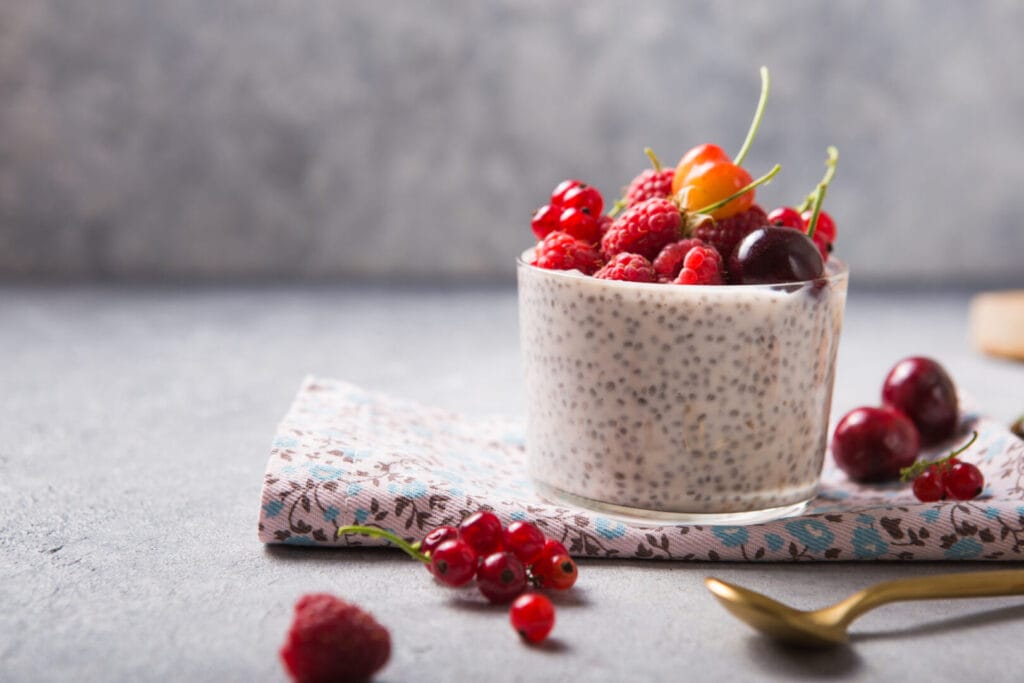
Nutritional drinks for seniors
Nutritional drinks can play a crucial role in the diet of seniors, especially for those who may find it challenging to meet their nutritional needs through solid foods alone. These beverages are designed to provide a concentrated source of vitamins, minerals, protein, and other nutrients essential for maintaining health and vitality in older adults. Here's a closer look at how nutritional drinks can benefit seniors and some options to consider incorporating into their daily regimen.
Types of nutritional drinks
- Complete nutritional shakes: These are all-in-one solutions designed to meet a significant portion of a senior's daily nutritional requirements, including vitamins, minerals, protein, and dietary fiber.
- Protein shakes: Specifically formulated with high levels of protein, these shakes are beneficial for muscle maintenance and repair, especially important for seniors engaged in physical therapy or exercise programs.
- Homemade smoothies: Customizable and made with fresh ingredients, homemade smoothies can be tailored to meet specific nutritional needs or preferences, incorporating fruits, vegetables, yogurt, or protein powder.
- Meal replacement drinks: Intended to replace a meal, these drinks provide balanced nutrition with a specific calorie count and are often used for weight management or to ensure dietary needs are met when a meal isn't possible.

Tips for choosing nutritional drinks
- Check nutritional content: Look for drinks that offer a balance of nutrients, including protein, carbohydrates, fats, vitamins, and minerals, tailored to the specific health needs of the senior.
- Consider dietary restrictions: Choose drinks that comply with any dietary restrictions, such as low-sodium for heart health or gluten-free for those with celiac disease.
- Taste preferences: Since seniors will be more likely to consume drinks that taste good to them, consider taste preferences and potentially try out different flavors to find the most appealing options.
- Consult healthcare providers: Before adding nutritional drinks to a senior's diet, consult with a healthcare provider or a dietitian to ensure they're appropriate for their health status and nutritional needs.
Celebrating National Nutrition Month by preparing senior-friendly recipes is a wonderful way to show love and care for the elderly in our lives. These recipes not only meet their nutritional needs but also provide the comfort and joy that come from a delicious meal. As family caregivers, our role in nurturing through nutrition is a testament to our dedication and affection for our elderly loved ones. Let's make this month a memorable one by exploring new recipes and creating healthy, tasty meals together.





